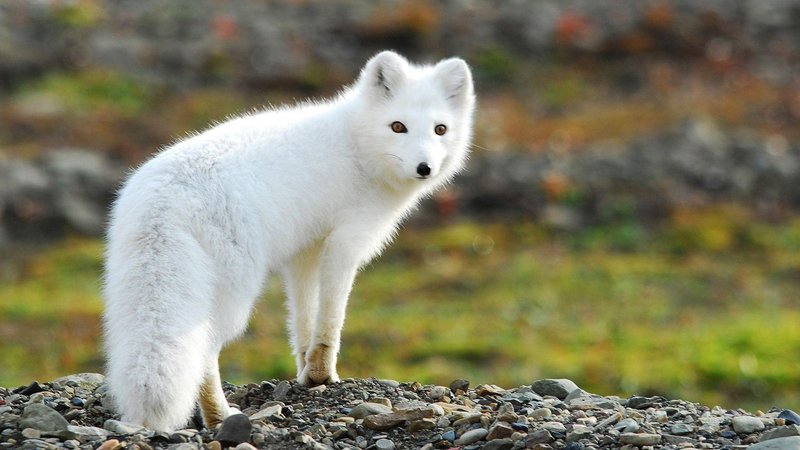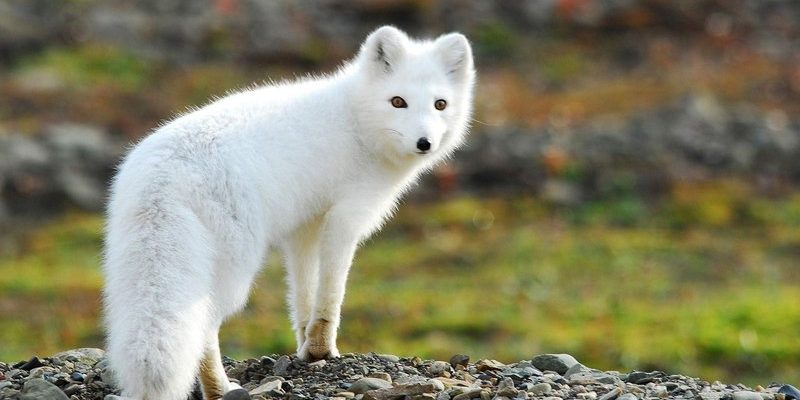
When you think of the Arctic, you might picture vast white landscapes and harsh weather. But within that icy realm, the Arctic fox has carved out a niche for itself, adapting to everything from food scarcity to extreme cold. So, how exactly do these clever little creatures make it through such a tough environment? Let’s dig into their survival secrets and see what makes them so special.
Thick Fur for Insulation
One of the first things you’ll notice about Arctic foxes is their thick coat of fur. It’s not just for show—it’s a lifeline in the brutal cold. This fur has a few amazing features that help with insulation.
First off, their fur is incredibly dense and consists of two layers: a soft undercoat and longer guard hairs on top. The undercoat traps heat close to the body, while the guard hairs repel moisture, keeping them dry. Think of it like wearing thermal underwear under a waterproof jacket. During the coldest months, their fur changes color from brown or gray in the summer to a brilliant white in winter, which also provides camouflage against the snow.
You might wonder how this fur aids in survival beyond just warmth. Well, when temperatures drop, Arctic foxes can lower their metabolic rate to conserve energy. This means they can stay snug and warm even when food is scarce.
Unique Hunting Strategies
Finding food in the Arctic is no easy task. The landscape can seem barren, and most animals hibernate or migrate during the extreme cold. Yet, Arctic foxes have developed some clever hunting strategies to help them find meals.
One of their favorite snacks is lemmings, small rodents that live in the tundra. Arctic foxes have excellent hearing, which allows them to locate their prey beneath the snow. They’ll use a technique called “silent pouncing,” where they leap into the air and come down on their unsuspecting dinner. It’s like a furry ninja move!
But they don’t just rely on lemmings. Sometimes, they’ll scavenge from larger predators’ kills, taking advantage of the leftovers. They’ve been spotted following polar bears around, waiting for the big guy to finish his meal. In a way, Arctic foxes are opportunistic diners. They know how to make the most out of any situation.
Adaptation to Change
The Arctic is a place of extremes, and these extremes can change quickly. Arctic foxes not only survive the cold, but they also adapt to changing seasons. During summer, they take advantage of the melting snow and longer daylight hours to hunt more easily and increase their food supply.
Interestingly, Arctic foxes are also social creatures. During the summer, they often form small family groups, which can help in hunting and protecting their young. This teamwork boosts their survival chances, especially in a landscape where dangers lurk. Family ties are a big part of their strategy for thriving in the wild.
Resourcefulness and Creativity
Honestly, one of the most impressive traits of Arctic foxes is their resourcefulness. When food is hard to find, they’ll dig for roots or berries, showing that they’re willing to try different food sources. This creativity pays off during lean times when other food sources are scarce.
You might be surprised to learn that they can also go for long periods without eating. If they have to, they’ll slow their metabolism and conserve energy until they can find their next meal. This ability to adjust to what nature throws at them is a crucial part of how Arctic foxes navigate their harsh world.
Smart Nesting Habits
When it comes to raising their young, Arctic foxes have some clever nesting strategies. They often dig dens in the ground or use existing ones to provide shelter from the elements. These dens are not just cozy; they protect their young from harsh weather and predators.
A single den can house a family of foxes, and they’ll often reuse the same one year after year. This practice helps them get a jump start on raising their pups each spring. In a way, these dens serve as a safe haven in a harsh environment, allowing the next generation of Arctic foxes to thrive.
Understanding Conservation Efforts
As climate change continues to impact the Arctic, the survival of Arctic foxes is at risk. Their habitat is changing, impacting their food sources and breeding grounds. This change raises concerns about how these remarkable creatures will survive in the future.
Conservation efforts are underway to protect the Arctic’s fragile ecosystem. These initiatives focus on habitat preservation and research to ensure that Arctic foxes and other wildlife can continue to thrive. By understanding their needs and the challenges they face, we can help create a future where Arctic foxes can continue to roam their icy territories.
The Takeaway
Arctic foxes are remarkable animals that have adapted to some of the planet’s harshest conditions. With their thick fur, clever hunting strategies, and resourcefulness, they continue to thrive even when temperatures drop and food becomes scarce. Their ability to adapt and their smart living habits are essential for their survival.
As we learn more about these fascinating creatures, it’s important to advocate for their conservation and the preservation of their habitat. By doing our part, we can ensure that Arctic foxes will continue to survive and flourish in their unique, frozen world for generations to come.

